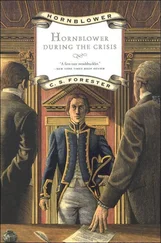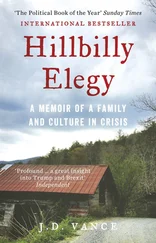Greta Thunberg - Our House Is on Fire - Scenes of a Family and a Planet in Crisis
Здесь есть возможность читать онлайн «Greta Thunberg - Our House Is on Fire - Scenes of a Family and a Planet in Crisis» весь текст электронной книги совершенно бесплатно (целиком полную версию без сокращений). В некоторых случаях можно слушать аудио, скачать через торрент в формате fb2 и присутствует краткое содержание. Город: New York, Год выпуска: 2020, ISBN: 2020, Издательство: Penguin Books, Жанр: Биографии и Мемуары, Публицистика, на английском языке. Описание произведения, (предисловие) а так же отзывы посетителей доступны на портале библиотеки ЛибКат.
- Название:Our House Is on Fire: Scenes of a Family and a Planet in Crisis
- Автор:
- Издательство:Penguin Books
- Жанр:
- Год:2020
- Город:New York
- ISBN:978-0-14313-357-5
- Рейтинг книги:4 / 5. Голосов: 1
-
Избранное:Добавить в избранное
- Отзывы:
-
Ваша оценка:
- 80
- 1
- 2
- 3
- 4
- 5
Our House Is on Fire: Scenes of a Family and a Planet in Crisis: краткое содержание, описание и аннотация
Предлагаем к чтению аннотацию, описание, краткое содержание или предисловие (зависит от того, что написал сам автор книги «Our House Is on Fire: Scenes of a Family and a Planet in Crisis»). Если вы не нашли необходимую информацию о книге — напишите в комментариях, мы постараемся отыскать её.
Our House Is on Fire: Scenes of a Family and a Planet in Crisis — читать онлайн бесплатно полную книгу (весь текст) целиком
Ниже представлен текст книги, разбитый по страницам. Система сохранения места последней прочитанной страницы, позволяет с удобством читать онлайн бесплатно книгу «Our House Is on Fire: Scenes of a Family and a Planet in Crisis», без необходимости каждый раз заново искать на чём Вы остановились. Поставьте закладку, и сможете в любой момент перейти на страницу, на которой закончили чтение.
Интервал:
Закладка:
Wishes she could be there too.
Wishes they could do everything together.
Beyond the huge iron-ore mine there’s a glimpse of the mountains and all that was once untouched. Svante tries to point out where the new, relocated Kiruna will be, but it’s all very unclear. On the right, all that is visible is a big grassy slope and high-rises designed by the architect Ralph Erskine.
‘I think the town is going to be somewhere over there behind the hill, but I’m not sure,’ Svante says. ‘A big part of the town will be moved, because it’s no longer safe. The LKAB mine has grown so much and they’ve extracted such huge quantities of ore that everything is about to collapse. So now the state-owned mining company is boasting about how they’re going to foot the bill for the whole move.’
‘It’s the least they can do,’ says Greta.
‘Yes, mining operations aren’t exactly a non-profit enterprise,’ Svante says, pressing start on the Naomi Klein again while they follow the Iron Ore Line to the northwest. After a few kilometres they brake for a herd of reindeer, and Greta takes pictures with her cracked old phone which, for a whole year, had served as a wifi router for the asylum-seeking family that was living in our house on Ingarö.
They are already in another world – a world where cars still have to adapt to animals. The reindeer cut a path around the oncoming trucks until finally our car can slowly move through the herd and continue across the plain towards Torneträsk.
SCENE 88.
A Time Machine
Svante is thinking so hard his whole body is vibrating. He would really like to be able to answer the question. He wants to show that he is well enough informed on the subject to justify his presence among the two dozen university interns from all over Europe who fill the classroom at the Swedish Polar Research Secretariat in Abisko. But the question is a difficult one.
‘What is the efficiency rate of solar panels?’
No one can answer, even though the question concerns renewable energy and even though all those present are studying sustainability, ecology, biology or the climate. Svante considers taking a stab at it – it has to do with gradient and degrees, he thinks – when Keith Larson, the evolutionary ecologist currently at Umeå University, unexpectedly points towards Svante and Greta’s desk.
Roxy is sleeping under Greta’s chair and Svante feels a little surge of stress before, out of the corner of his eye, he sees Greta raise her hand. He has no time to react.
‘Sixteen per cent,’ she answers loudly and clearly in English, the first time in several years that Svante has heard her speak of her own volition with someone outside the family besides her teacher Anita.
He doesn’t understand where it came from. Much less does he understand the origin of the answer, the 16 per cent.
‘Exactly!’ Keith Larson responds happily from up by the whiteboard, repeating the answer one more time. ‘Sixteen per cent!’
The students from all over Europe look with amusement and surprise at Greta while the lecture continues up by the screen.
Afterwards they stand on the roof of the measurement station and Keith Larson explains that the major changes started to pick up speed in the late eighties. Since then they have been moving fast. Extremely fast.
‘The snow, ice and glaciers had a delaying effect up here in the Arctic. But once they’d melted a certain amount it has gone even faster.’
Keith is an American, but nowadays lives year-round at the compound, which is the world’s oldest, still-functioning research station. It was built at the same time as the Iron Ore Line, and now a unique project is being carried out in which research from a century ago is being repeated. Along the slope of Nuolja mountain the vegetation is being measured at exactly the same place now as then.
And even if the research results are still far from ready, major differences can already be seen. Some with the naked eye.
‘Of course what is happening here follows the trends from across the whole planet. The temperature is rising and the difference is greatest close to the poles. The tree-line is climbing up the mountain slopes, the vegetation zone follows and the Alpine environment is shrinking. When the temperature increases, trees and bushes can grow higher up, where before it was too cold.’
Another kilometre-long ore train thunders through the landscape between the research station and the mountain tops.
‘Here in Abisko the results of climate change manifest differently than in most other places. Here, everything is obvious even for those who don’t have any experience studying these types of changes. Just look at the transition zone, where the bushes grow, which today is four times the size it was a hundred years ago.’
Keith Larson explains that perhaps the biggest problem is that the Alpine zone is shrinking. This means the species that live there are forced out by other animals, insects and plants that are following the trees’ progress up the mountainsides. They have to keep moving until there is nowhere else to go. The balance is upset. The conditions are changed.
‘If you look at the tree-line on Nuolja you see that it has climbed up the mountain slope, just like it has at countless other places around the world. Now, a ski lift has been built there too, which means that the reindeer haven’t grazed that area, but the result is much the same,’ he says, pointing up towards the mountain. It is hot up on the black roof and they decide to move down into the shade to talk. But before they go down and leave the view up towards the mountains, he points out the most striking change.
‘Fifty years ago the tree-line was at the same place as it was when Thore Friis did his research studies a hundred years ago. But now it is moving. Faster and faster. Today it is 230 metres further up the mountain slope.’
‘Did you say 230 metres?’ Svante repeats.
‘Yes,’ Keith replies. ‘This is the front line for the Arctic. The changes here are happening at high-speed, as I said. And I’m surprised that more researchers don’t make their way to Sweden and Abisko. This is such a unique environment and an incredible amount is happening.’
The next morning Greta, Svante and Roxy accompany four German university students who are collecting data from the same area of the mountain that Friis used for his study between 1916 and 1919. Yrsa, the daughter of our book’s publisher, goes with them too. She has a summer job as a communications officer for Keith Larson and his team.
‘It’s unique that such detailed studies are still preserved today and can be used in our research a hundred years later. It’s like a time machine,’ the students explain.
They start close to the top by setting up a tripod along the path and registering their position with their iPads.
Greta and Svante follow a short distance behind. The view is entrancing and you can see for an incredible distance: Torneträsk. The mountains. And the Iron Ore Line, of course, which never rests. Far below they see the trains churning on towards Narvik and Norway. Towards the harbour, the ships, the sea and all the waiting industries around the world.
High up on the mountain it’s late winter. Further down comes spring, with flowers and rippling streams. At the transition zone it’s summer and it’s time for lunch. The flies buzz and there is a scent of flowers and moss. It is calm and everyone takes off their jackets and fleeces.
‘I assume that this is what it’s like for you every day,’ Svante jokes.
‘Not really,’ they say with a laugh in return.
Читать дальшеИнтервал:
Закладка:
Похожие книги на «Our House Is on Fire: Scenes of a Family and a Planet in Crisis»
Представляем Вашему вниманию похожие книги на «Our House Is on Fire: Scenes of a Family and a Planet in Crisis» списком для выбора. Мы отобрали схожую по названию и смыслу литературу в надежде предоставить читателям больше вариантов отыскать новые, интересные, ещё непрочитанные произведения.
Обсуждение, отзывы о книге «Our House Is on Fire: Scenes of a Family and a Planet in Crisis» и просто собственные мнения читателей. Оставьте ваши комментарии, напишите, что Вы думаете о произведении, его смысле или главных героях. Укажите что конкретно понравилось, а что нет, и почему Вы так считаете.






![Корнелл Вулрич - Murder at Mother’s Knee [= Something That Happened in Our House]](/books/398097/kornell-vulrich-murder-at-mother-s-knee-somethin-thumb.webp)





